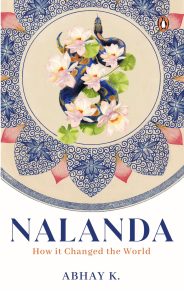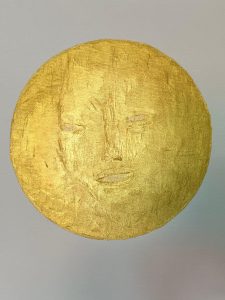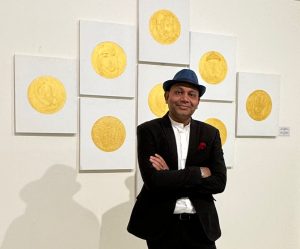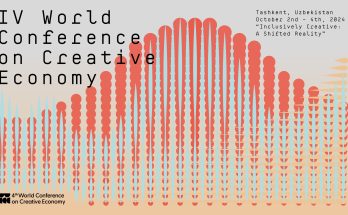Diplomat-poet Abhay K is always questing for new forms of creative expression. While his latest paintings exhibition explores the metaphysical theme of “Shunyata,” his new book chronicles the rise, fall and rebirth of Nalanda, the iconic seat of learning in Bihar. He is the author of multiple collections of poetry, including Celestial, Stray Poems, Monsoon, and The Seduction of Delhi. His works have been translated into over a dozen languages, with his celebrated Earth Anthem being rendered into more than 150 languages worldwide. In this interview with Shweta Aggarwal, Associate Editor, India Writes Network, Abhay K speaks about his inspiration behind writing the book on Nalanda and how he juggles diplomacy with poetry and paintings.
Excerpts from the interview
Q) What’s your next book on Nalanda about? Why have you chosen to write about Nalanda?
A) I was born and raised in the Nalanda district of Bihar. Yet much about Nalanda was a mystery to me. It was during my school days that I started exploring the ruins of the Nalanda Mahavihara. I wanted to learn more deeply about its history and how did it become such a celebrated seat of learning, who were the great teachers who taught there and how was it destroyed and what contributions did it make, which continue to impact our lives even today.
Much about Nalanda continues to remain a mystery. When was it founded, who founded it, who studied and taught there? What subjects were taught? How many students and teachers were there? Was Nalanda a university in the modern sense? What led to Nalanda’s downfall? My book Nalanda unveils these mysteries and tells the story of the rise, fall and revival of Nalanda, highlighting its contributions in various fields such as science, medicine, public health, mathematics, astronomy, philosophy, art, architecture, translation, poetry, script, grammar, religion.

In this seminal work based on extensive research, I also explore the lives of the great luminaries who contributed to Nalanda’s unparalleled reputation as the preeminent seat of knowledge and learning, as well as the foreign scholars who visited the celebrated monastery. Broad in sweep and deep in history, Nalanda is a thrilling read that sheds new light on its millennia-long journey.
Decoding Shunyata
Q) What inspired you to do paintings on the metaphysical-spiritual theme of “Shunyata.”
A) While researching for my book Nalanda :How it Changed the World, I came across the Buddhist philosophy of ‘Shunyata’ or ‘Emptiness of inherent existence.’ When I stared at the empty canvas, I had no clue what I was going to paint. I started with making a circle and filling it with paint and it started taking a form. Each time a new form took shape on the canvas I felt mesmerised. I started enjoying the process.
This experience took me to back to my birth place in Rajgir (ancient Rajgriha), Bihar, where Boddhisatva Avlokiteshvara had spoken these words to Sariputra on the Gridhakuta Parvat (Vulture’s Peak)— “Form is emptiness and emptiness itself is form; emptiness is nothing but form, and form is nothing but emptiness; that which is form is emptiness, and that which is emptiness is form. So are sensation, perception, volition and consciousness. Thus, Sariputra, all things have the character of emptiness; they are neither born nor cease; they are neither pure nor impure, neither incomplete nor complete.” Later on, philosopher Nagarjuna further articulated the concept of “Shunyata” in his seminal philosophical treatise Mulamadhyamakakarika in 2nd century CE.
These paintings are visualizations of emptiness. Forms are visible when one looks at them closely but as one moves away from them, forms disappear and what remains is emptiness, a true validation of the crux of Heart Sutra -‘form is emptiness, emptiness is form.’
The forms that appear are mere approximations of figures familiar and unfamiliar, gods and goddesses, mortals and immortals, plants and animals. They are all transient. They appear and then vanish. Emptiness remains. The form of a circle and sphere transcends Earth and becomes a universal form representing celestial bodies, stars (including our own Sun, source of life) planets, and black holes (symbolising death).
I have tried to visualise this state of continuous transformation of emptiness into form and form into emptiness through a series of 60 paintings evoking diverse moods, rasas, forms, but unified with an underlying theme of Shunyata.
Q) You have published many books of poems. What prompted you to try painting as a form of expression? How is painting different from writing poetry?

A) I have been painting simultaneously with poetry and held my first painting exhibition in 2008. When I arrived in Moscow in 2005, I got an opportunity to visit several museums and art galleries, which inspired me to write and paint. I bought paint and brush and made my first painting on a used carton chocolate box. One day I was invited by the Georgian-Russian artist Zurab Tsereteli to paint in his studio, which was a great encouragement for a budding artist and helped to get confidence. Afterwards, I spent a lot of time with artists in St. Petersburg and learned paintings from them.
Painting is visual poetry for me. They both come from the same source of creative reservoir. In painting, you play with empty canvas with paint and brush, while in poetry you write on an empty page and the poem dictates itself.
Q) How do you juggle your day job as a diplomat and your creative vocation as a poet?
A) Both poetry and diplomacy complement each other for me. Being a poet helps me to be a better diplomat and being a diplomat helps me to become a better poet. We often find time for things we love to do in our life and I find time for poetry.
Author Profile
- India Writes Network (www.indiawrites.org) is an emerging think tank and a media-publishing company focused on international affairs & the India Story. Centre for Global India Insights is the research arm of India Writes Network. To subscribe to India and the World, write to editor@indiawrites.org. A venture of TGII Media Private Limited, a leading media, publishing and consultancy company, IWN has carved a niche for balanced and exhaustive reporting and analysis of international affairs. Eminent personalities, politicians, diplomats, authors, strategy gurus and news-makers have contributed to India Writes Network, as also “India and the World,” a magazine focused on global affairs.
Latest entries
 India and the WorldNovember 26, 2025G20@20: Africa’s Moment – The Once and Future World Order
India and the WorldNovember 26, 2025G20@20: Africa’s Moment – The Once and Future World Order DiplomacyOctober 4, 2025UNGA Resolution 2758 Must Not Be Distorted, One-China Principle Brooks No Challenge
DiplomacyOctober 4, 2025UNGA Resolution 2758 Must Not Be Distorted, One-China Principle Brooks No Challenge India and the WorldJuly 26, 2025MPs, diplomats laud Operation Sindoor, call for national unity to combat Pakistan-sponsored terror
India and the WorldJuly 26, 2025MPs, diplomats laud Operation Sindoor, call for national unity to combat Pakistan-sponsored terror India and the WorldJuly 25, 2025When Fire Ends, Diplomacy Begins
India and the WorldJuly 25, 2025When Fire Ends, Diplomacy Begins








